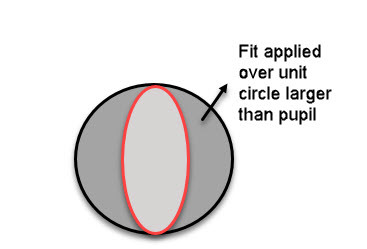The exit pupil of my system is elliptical, I want to know the rule of zernike fitting in OpticStudio, especially when the wavefront is elliptical. Will OpticStudio use a elliptical polynomials ? I use my own program with circular polynomials to fit the wavefront in matlab, and get a diffrent result. But this question is not remained in circle wavefront zernike fitting .
Solved
zernike coefficient of elliptical wavefront
Best answer by Berta.Bernad
Hi Yifan,
Zernike Standard Coefficients and Zernike Fringe Coefficients are defined on a unit circle. By default, they are determined for the entire pupil, but the subaperture values Sx, Sy, and Sr allow computation of the Zernike data only over a circular subaperture portion of the pupil.
However, when performing a fit for each of these analyses, OpticStudio will only use data points defined over that elliptical region that is the pupil. That is, OpticStudio will map the unit circle into the ellipse that defines the maximum extent of the rays that OpticStudio launches through the system.
Enter your E-mail address. We'll send you an e-mail with instructions to reset your password.




